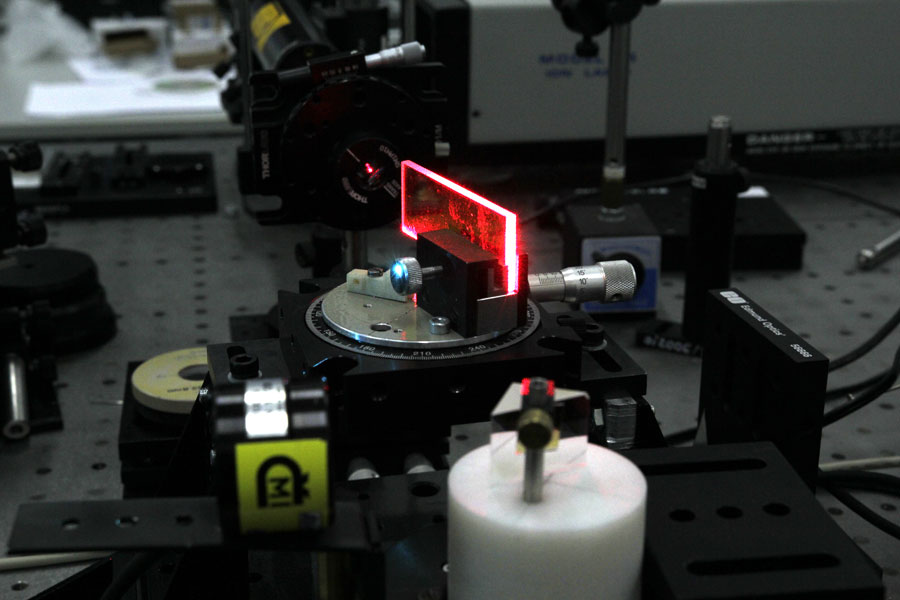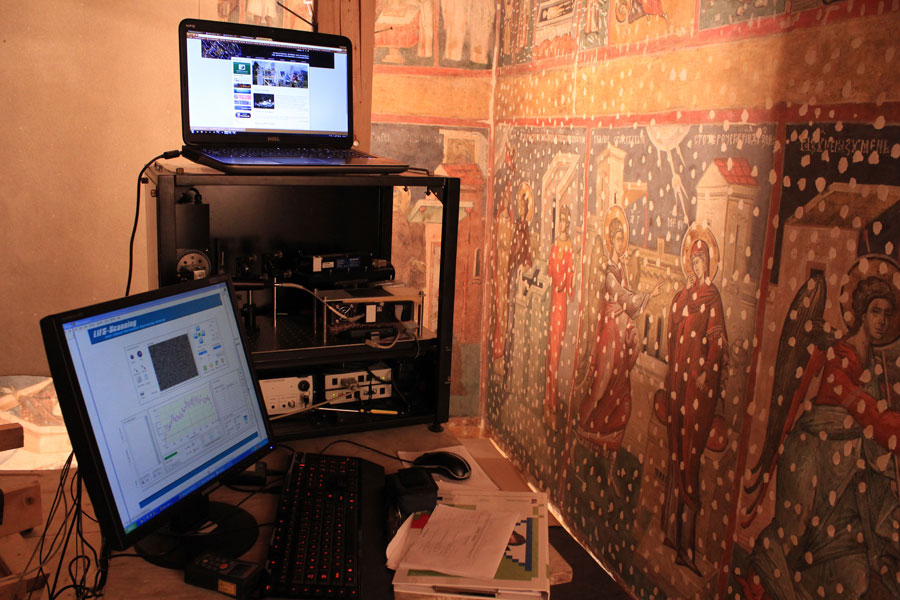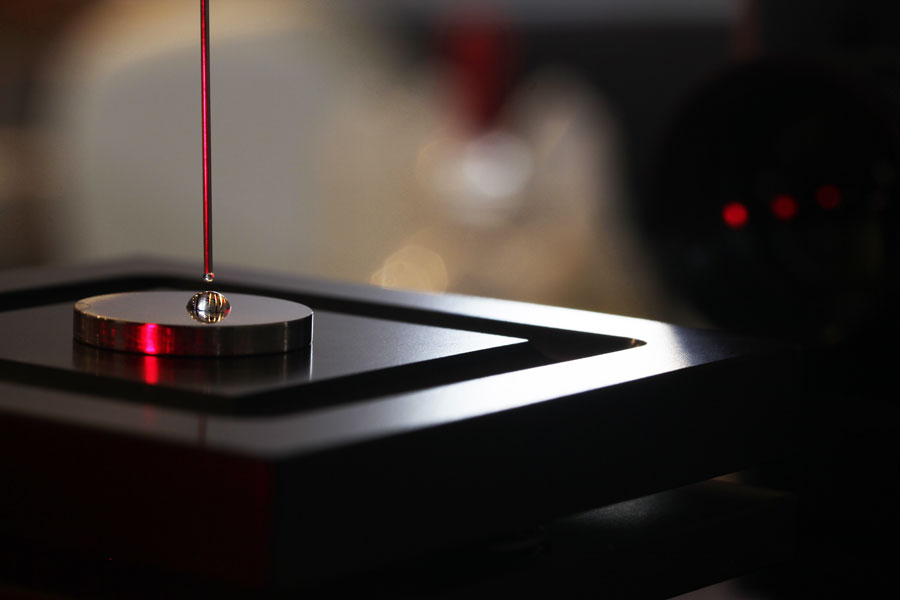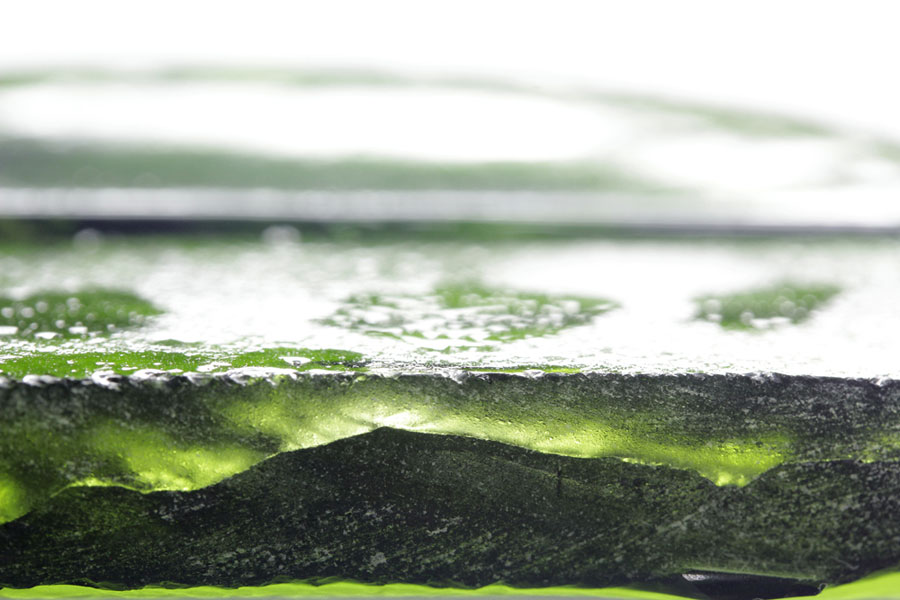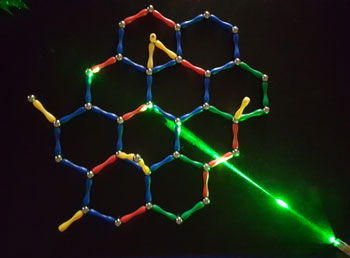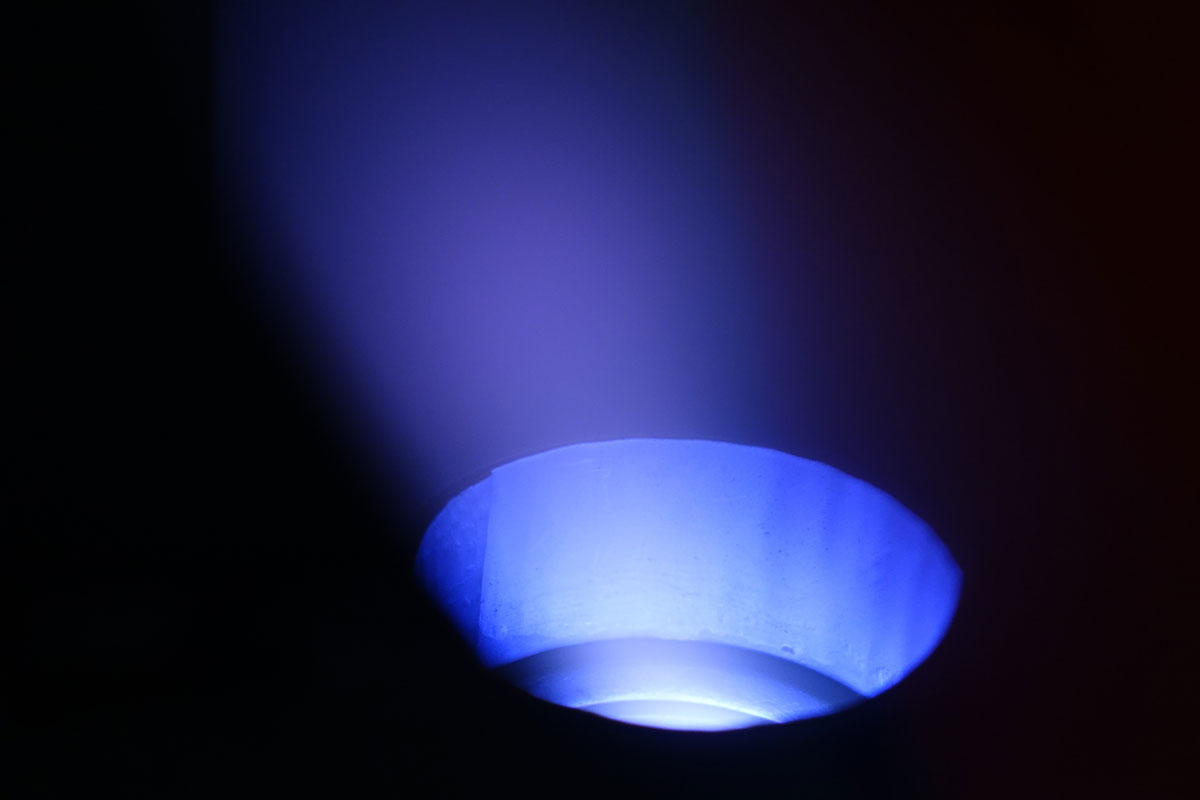C. Onose, C. S. Onose, M. Mihaly, N. Badea, H. Niciu, D. Niciu, M. Elisa, The synthesis of nanocrystaline electroluminescent chalcogenide, J. Optoelectron. Adv. Mater., 9/10 (2007) 3206-3209
Title: The synthesis of nanocrystaline electroluminescent chalcogenide
Abstract: Zinc and cadmium sulphide is a ternary compound used as a pigment, phosphors and semiconductor material. The paper presents an experimental study regarding the obtaining process of the nanocrystalline compound ZnxCd1-xS. In technical papers there are many recipes for colloidal ZnS and CdS synthesis in different working conditions and from various raw materials. Depending on the chosen recipe one can obtain colloidal ZnxCd1-xS particles of greater or smaller sizes. The pH and the concentration of the synthesis solution have a great influence on the dimensions and properties of synthesised particles. The method consists in co-precipitation of ZnxCd1-xS from CdSO4/ Cd(NO3)(2) and ZnSO4/ Zn(NO3)(2) solutions, by adding an exceeding amount of Na2S at high pH of the solution. The precipitation reaction takes place in the presence of a stabiliser, copolymer stiren-maleic anhydride. The stabilizer provides a colloidal state of the synthesized material and does not allow ZnxCd1-xS nanoparticles to agglomerate. This ternary compound has a high efficiency of the UV exciting energy conversion into visible light, applied in photo and electroluminescent cells.
Key words: nanocrystals; Zn-Cd-S; synthesis; coating; phosphor; semiconductor; electroluminescence













